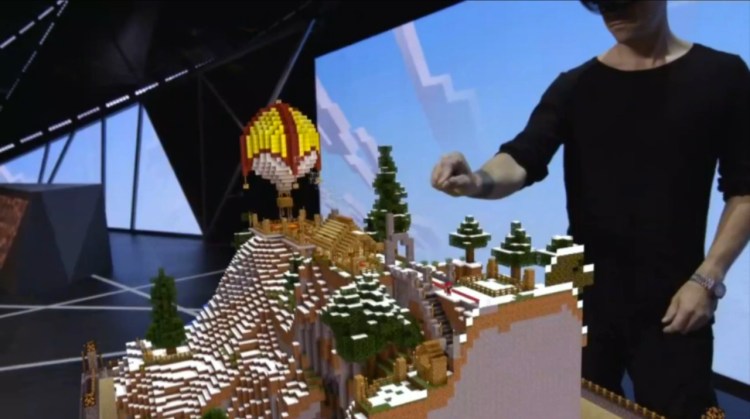We’re on the precipice of the virtual reality future, but we’ll probably have to wait a few more years before augmented reality is a part of our daily lives.
The Microsoft HoloLens AR head-mounted display (HMD) is “really a five-year journey,” the company’s chief executive officer Satya Nadella said at Salesforce’s Dreamforce customer conference yesterday. This is likely a reference to Microsoft’s plan to slowly roll out and test the HoloLens in certain industries before making a push into the consumer space. This HMD is one of the Microsoft products that has people the most excited because of the incredible demos the tech powerhouse has shown off so far. The HoloLens is capable of superimposing interactive digital images on top of the real world in a way we’ve never seen before.
Making that kind of technology work requires a lot of computing power, but Microsoft doesn’t want HoloLens to have to rely on a connection to a PC. But putting all of the processors, sensors, and gizmos in a pair of sunglasses at a consumer-friendly price will require a few more years. Meanwhile, virtual reality is going to get truly started later this year and in early 2016 as companies like HTC, Oculus VR, and Sony release their VR headsets.
Here’s the Minecraft HoloLens demo that Microsoft showed off at the Electronic Entertainment Expo video game tradeshow in June:
We’ve asked Microsoft for clarification on the “five-year journey” statement, and it provided the following statement.
“We are thrilled by all the response to Microsoft HoloLens. As Satya has mentioned, it will be available within the Windows 10 timeframe, which means that it will be available within the next year. HoloLens has been a multi-year journey, and the first version will focus on developers and enterprise scenarios.”
That seems to jive with the idea that a five-year journey is referring to a road map that will put HoloLens on store shelves next to laptops and tablets by 2020. And the “developer and enterprise scenarios” is where Microsoft will test out the current hardware with an early prototype.
Microsoft will start letting developers get the HMD in early 2016. It will then take the newly created software (as well as the critiques and feedback from third-parties) to improve the hardware over the next couple of years. Microsoft will even begin working with specific professions to see how HoloLens works in the field. Early candidates for HoloLens use? NASA and medical doctors … hopefully they’ll add video game journalists to that list soon.
Updated at 3:55 p.m. on September 17 with a comment from Microsoft.
VentureBeat's mission is to be a digital town square for technical decision-makers to gain knowledge about transformative enterprise technology and transact. Learn More

